
In summer 2020, we have accomplished our first expedition to the Northern and Middle Kurils. The route covered hard-to-reach locations, which could be accessed only aboard expedition ship. Orcas, seal rookeries, volcano craters, black sand beaches and sea cliffs — this is just a tiny part of what can be seen there.
Sergey Dolya, the number 1 Russian travel blogger, was the photo guide during the expedition. He has visited more than 100 countries, traveled to the South and North Poles and explored the wildest parts of Russia, such as the Shantar Islands, Chukotka, the Russian Arctic and more. About the cruise to the Kurils he told that it was "the journey to recall in old age when you will be thinking of good old times."
After returning from the trip, Sergey posted dozens of amazing photos. Let us share the best of them here with you.
“Do you remember I suggested you to join me on the trip to the Kurils? So, this adventure has started! To be precise, it is almost over, but I haven’t shared my experience with you until now.
Jumping ahead, I must say, that the Northern Kurils is something incredible. In the next couple of days, I will post a lot of beautiful sceneries, volcanoes, lenticular clouds, spectacular sunsets, turquoise lakes, whales, sea lions and fur seals.
It all started with leaving the port of Petropavlovsk-Kamchatsky through the Avacha Bay, where we passed the Three Brothers rocks. That day we landed on a small island of Starichkov.
Three Brothers are the rocks that according to the legend are three petrified young men who protect the bay from tsunami.”
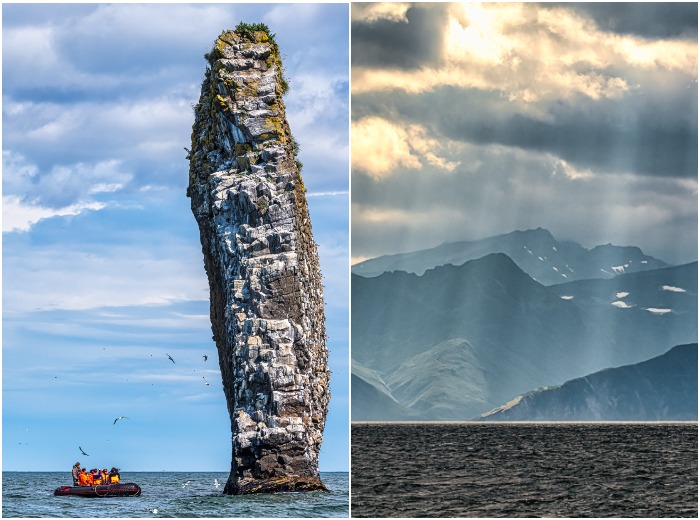
"Lenticular clouds look like a bunch of chunky pancakes. It seems like they stand still, however, actually the wind there is so strong, that it just blows you off your feet. I took a time-lapse to show you how they emerge.
Usually, they occur in mountainous areas with strong winds. They can be observed in Patagonia, Kamchatka and the Kurils.
This is the sunset at the southern end of Kamchatka. Whales are from there as well.”
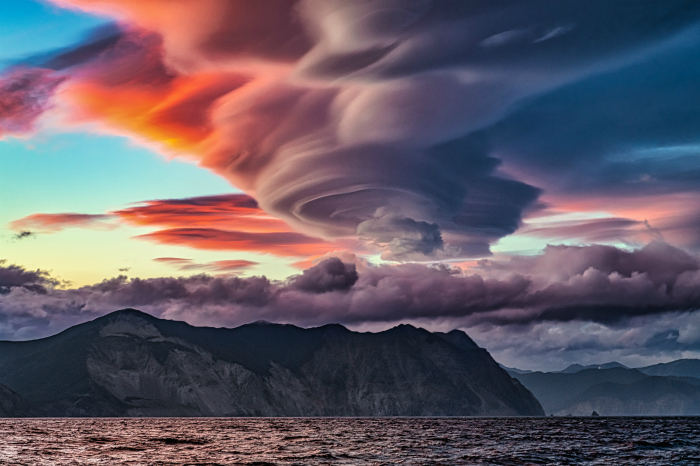
3. Atlasov Island, the highest island of Russia
“Atlasov Island is actually the Alaid volcano — the highest point of the Kuril Islands. The latest eruption of the Alaid took place in September 2015.
In the past, the island belonged to Japan. Famous Japanese poets and artists used to come to Atlasova to enjoy views of Alaid. They thought that its shapes are more perfect than the cone of the famous Fuji.
Sometimes, small openings appeared on the slopes of the volcano and lava breaks out through them, leaving behind mini craters. Such craters are called "breakthroughs" and people even give names to them. For example, the ones that you see on the photos were named after the Olympic games of 1980.”
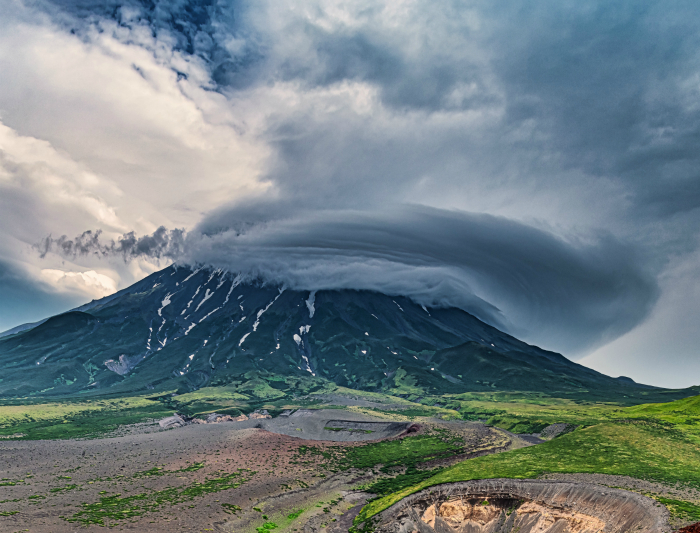
“A fumarole is an opening in a volcano that releases gas. Just imagine a pressure cooker if you remember it from your childhood. It’s a pot with a tightly twisted lid which has a small hole. It can be slightly lifted or shut. While everything is boiling with the lid closed, the pressure inside increases. This makes a cooking process faster. But we need to open up a hole in the lid so the steam is released and the pot does not explode.
The volcano is like a pressure cooker. Fumaroles are like the holes of the lid — they release the excess gas pressure from the volcano. Sometimes, however, they don’t cope with their job and the volcano erupts. The excessive pressure is released, and the volcano calms down.
The smoke that is released from the fumaroles is usually just a steam. Magma warms up the ground waters and they come out along with sulfur and hydrogen sulfide. This explains why most fumaroles are yellow (sulfur) and have a nasty smell (hydrogen sulfide).
Sometimes when the magma doesn't heat up the water too much, the vapor may again turn into liquid. Then it creates puddles around the fumarole, which are called thermae.
The pictures of the fumaroles on this insta-carousel were taken on Ebeko volcano, near the town of Severo-Kurilskoye on the island of Paramushir. Unfortunately, the weather was gloomy and we didn’t see the volcano itself. It took us 5 hours to climb it, and in the end we only reached the lower fumarole field.”
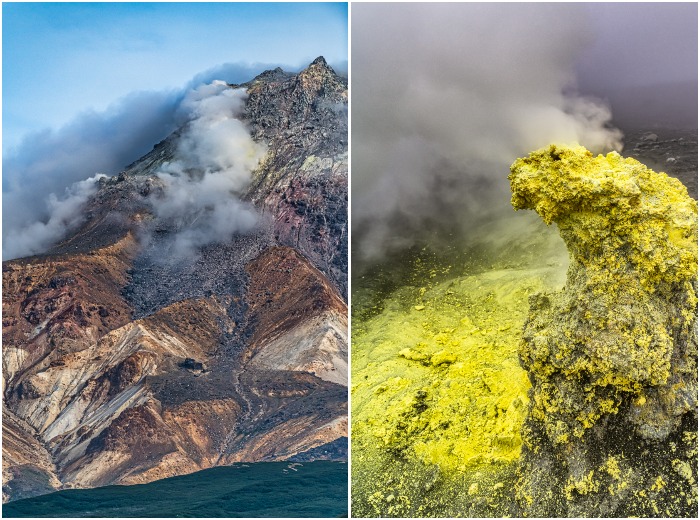
“Northern sea lions actually look more like bears rather than lions. They have nothing to do with cats.
These seals are extremely curious and are even prone to attacking humans. They don’t touch boats, but may pay their close attention to divers, swim up to them and start biting their scuba flippers and tubes later shifting to legs and the head.
Male and female seals differ a lot in size. Large males look a lot like bears, especially their muzzles. They will sit on the shore until the last moment and growl at you.
In general, as the boat approaches the den of sea lions (they normally stay on a shore protected by rocks), most of young Steller's sea lion rush into the water, get into groups and start to pop out near the boat and growl. Each time, they dug out a little farther and try to get people away from their temporary shelter.
Steller’s sea lions are notorious sleepyheads. When they are in the water, they already sleep with one eye shut and one open, and once they get out on land they zone out completely.
Sometimes it happens that all Steller's sea lions have already jumped into the water as we approach, and one of them is still napping. When he does open his eyes, the expression on his face says, "Oops, oh no!" and then he rushes into the water. The main thing here is not to stand in his way, or he will jump right into you!
This time I was diving with sea lions and it was scary. A whole gang was closely following me under water, but I will tell about it next time.”
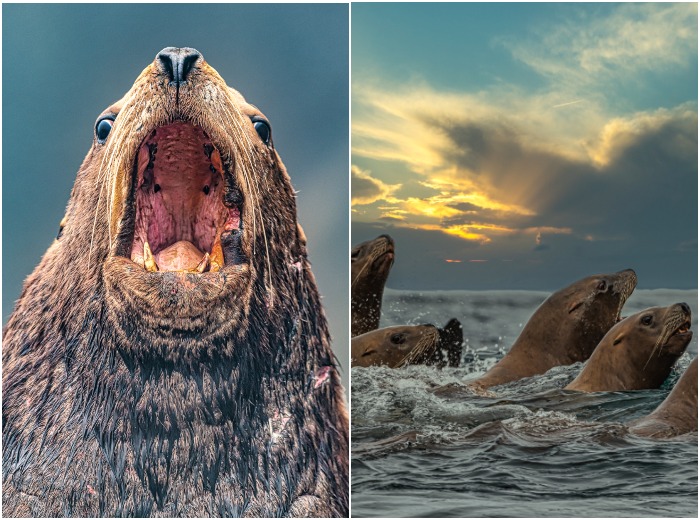
6. Ushishir — the island that exceeds expectations
"We receive information by the five senses: vision (80%), hearing (10%), smell (6%), touch (3%) and taste (1%). The most informative one is obviously vision. Sometimes we look through a magazine or surf on social networks and suddenly see a picture that attracts our attention, an image that makes us want to see it with our own eyes.
If you google Ushishir, you will want to travel to this place right away! You would want to sit on the ridge of a caldera and look at the low clouds that scratch the tops of the volcanos. It would be tempting to feel the wet high grass on your face as you climb up the slope. Do you feel it? Do you want to go there already?
Not all our dream destinations meet our expectations when we finally come there. Many times, nice glossy photos deceive us and form overstated expectations, so when you see it with your own eyes, you get disappointed. It is not the case with Ushishir though. Ushishir will certainly not disappoint you, even if you have high expectations. This place will surpass any of your expectations, because it has so many secrets that will only be revealed once you are on the island.
The view from the ridge on the lake is divine, majestic, unusual and fascinating. But besides the view, there are also a lot of polar foxes, that are not afraid of people at all. One of them even hijacked our boat, so we had to get into the freezing water to get it back. We also found the remains of a sperm-whale that was brought by the storm. And then there are also hot springs on the island that you can swim in.
I am not going to reveal all the cards to you. Next year I'll go there again, so I'll save an ace up my sleeves for later, but for now, Ushishir to all of you!”
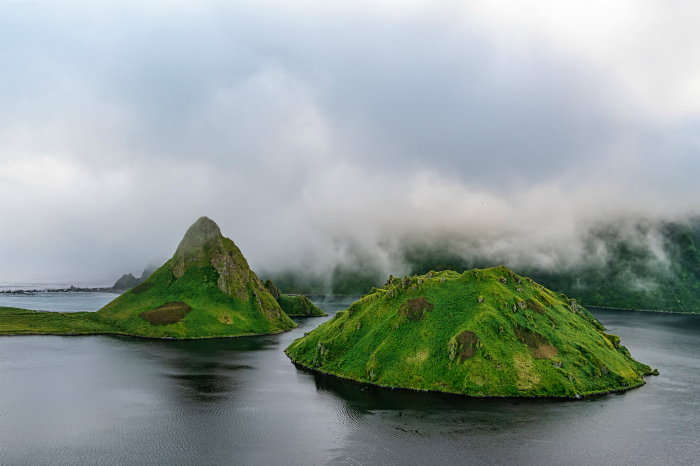
"The fox crept up unnoticed — this is certainly not about foxes on the Yankicha Island. They are absolutely not afraid of people and do not really bother to hide. If you follow them, they will keep a distance of a couple of meters, but if you stand still, they will come up to you.
People come here quite rarely, just a few times a year, so they do not lose their chance. They unblushingly crawl to your belongings that you left on the ground and start digging in your backpacks hoping to find something to munch on. Along with that, they are picky eaters and refuse any sweets and chocolate. Once they found something they like, a slice of bread, for example, they don’t eat it right away, but put it in the ground for later.
If you sit or lay on the ground, foxes will come up to you, sniff and then start biting you. I decided to put my small camera on the ground to see their reaction. As soon as I walked away from it, they ran up to it and started nibbling. One guy even licked the camera lens!
Arctic foxes are adorable. So fluffy! They remind me of curious and playful puppies. They really enjoyed sneaking into our boat trying to sniff everything there. It’s like a transportable collection of smells for them. During the high tide, we were bathing in the hot springs when suddenly our boat was carried away with one polar fox on board. It looked hilarious and we even joked that the fox hijacked our boat on purpose. In the end, one of us had to jump into freezing water to get the boat back to the shore. The fox waited till last minute, so right when the swimmer got on the boat, the fox jumped in the water and swam up to the shore. Once on-shore, he started shaking himself vigorously like a dog. So, this is a story of a swimmer and the polar fox.”
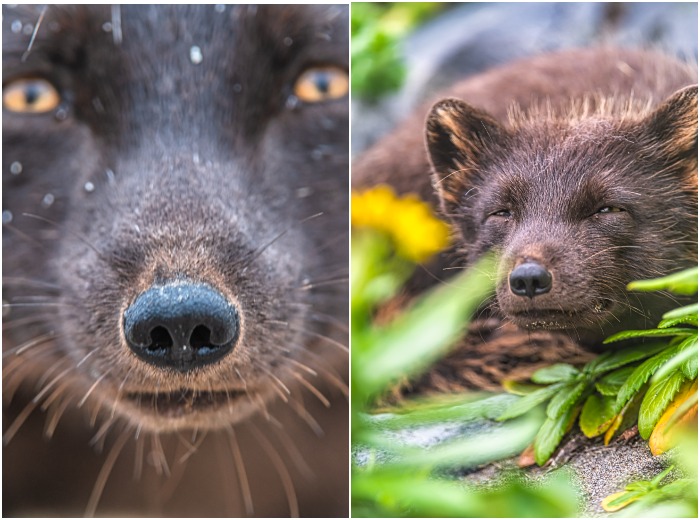
8. Raikoke Island and eruption of 2019
"Until last summer, Raikoke Island was the greenest and most populous in the Northern Kurils. A large number of bird species and sea lions inhabited it.
In June 2019 there was the volcano eruption here. Almost all animals died. Sea lions and seals were boiled alive in the ocean, they did not have time to escape. The birds suffocated in the ashes.
Now a year has passed, and the island is slowly recovering. Birds are returning to the island, gulls have built nests on rocks; sea lions crawled out on the new lava. Seals have not returned yet, but it is a matter of time.
Last year, the day after the eruption, the ship Athena (the one on which we are traveling now) approached Raikoke. Nikolai Pavlov, a member of that expedition, kindly provided me with the videos he had shot the day after the eruption and how the island looked before the cataclysm".
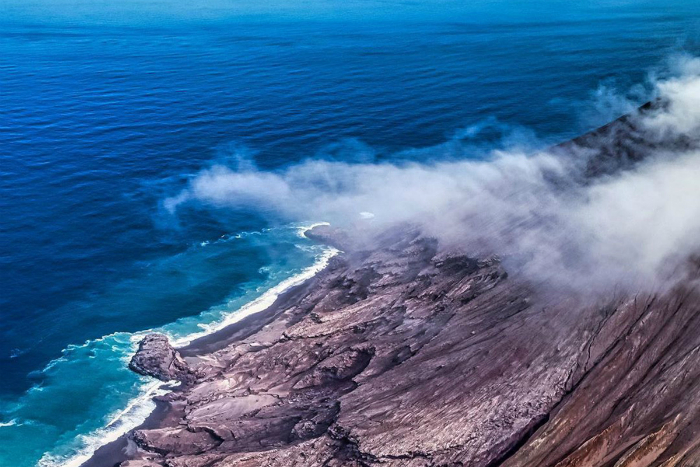
"Fur seals are perhaps the most curious animals, especially when they are babies. In the Northern Kurils we dived with them several times and each time it was an incredible experience. It was as if you had plunged into happiness.
Seals are super curious and playful. They swam right up to my diving mask, gnawed at the tubes, and tried to climb on my back as if it was a stone. There were so many of them that I had the feeling that I was swimming in a ‘fur seal soup’. Everything around me was boiling and gurgling.
My underwater flashlight aroused special interest among the seals. They swam right up to it and I managed to make a couple of shots in muddy and airy water.”
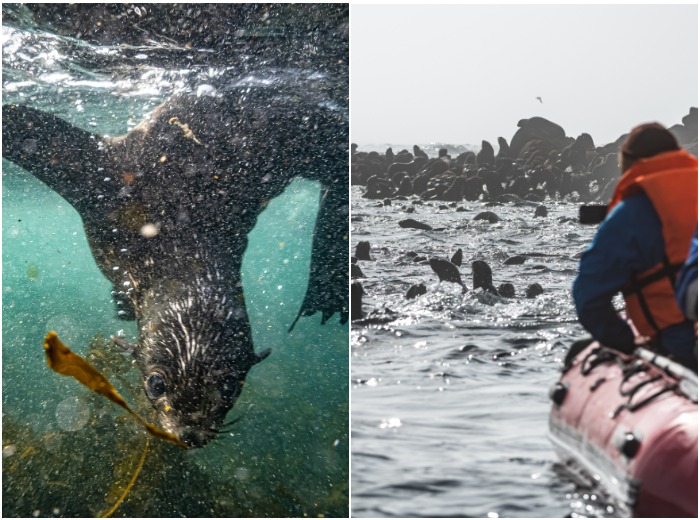
10. Simushir: most beautiful and hard-to-reach island of the Kuril Ridge
"Simushir is one of the most beautiful islands of the Kuril Ridge. It is located right in the middle of the Kuril Ridge between the inhabited southern islands of Iturup and Kunashir, and the north of Kamchatka and Paramushir Island.
Its highlight is the Turquoise Lake in the caldera of the Zavaritsky volcano. It’s not even the lake itself, but the heart-shaped island that covers the crater of the eruption that occurred in the early 20th century.
We were very lucky, as the day we were there was sunny, so we could admire this beauty sitting on the edge of the caldera. It is impossible to express in words what beauty we saw that day. Just have a look at the photos I had taken!
We had a heated discussion about the shape of the island though. If you look at it from a satellite it is heart-shaped and begirded by splashes of blue water.
When you are sitting on the edge of the caldera though, the shape of the island was not even close to it. Our opinions divided between the shape of the backside or female breasts. And what is your guess?"
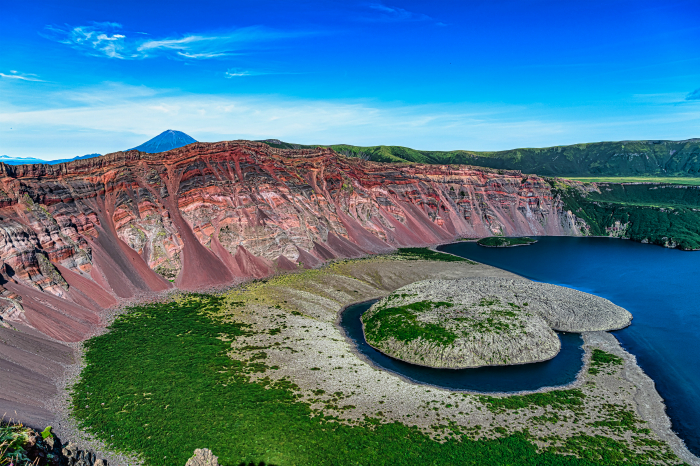
"The killer whale nickname is a result of a translation error. In the Middle Ages, the Spaniards struck by the fact that this predator hunts whales, called it asesina ballenas, which literally translates as 'whale’s killer'. When translated into English, it turned into a killer whale.
Another misconception related to orcas is that, in fact, killer whale is not a whale at all, it is a dolphin.
Orcas are very smart and hunt in groups. When hunting for a fish group, orcas first line up in a long chain and scour the ocean for fish. Then they force it to the shore and lock the group inside a ball. One after another, the orcas sink into the ball and blast the fish with their tails. As a result, the fish becomes disoriented and easy to catch. You can see how they do it in the carousel video, where the killer whale plays with the fish.
When hunting for seals, they can overturn the ice floe with the prey sitting on it, or wash it off the ice floe with a big wave. Recently killer whales have learned to cast themselves ashore, and then other orcas would get it back in the water with a tidal wave.
When hunting for whales, orcas first try to put aside a calf or a small whale from the flock. Then a part of orcas swim from above and do not let it get to the surface to breathe. Strongest orcas pick a spot on the whale’s body and repeatedly smash it with their muzzle. As a result, they make a hole in its lungs, and the whale sinks.
An orca needs depth to pick up its speed, so sometimes whales escape from them in shallow water off the coast. I have seen it myself on the Shantar Islands.
It’s interesting, that orcas usually grind down only the tongue, lips and throats of whales. The rest of the whale sinks to the bottom and becomes the meal of other deep-sea inhabitants.
Another misconception about orcas is that they attack people. This world doesn’t know any cases when it happened in the wild. It happened only when orcas were captivated. Then, they attacked people who captivated them.”

12. Krenitsyna volcano on Onekotan Island
"Krenitsyna volcano on the Onekotan Island is one of the most unique and beautiful volcanoes in the world. It is a two-level “volcano in the volcano".
There is a lake Koltsevoye (translated as ‘circled’ from Russian), and the volcanic cone rises right above it. The lake itself is surrounded by somma — the rim of a volcanic crater.
You would usually see a picture of this volcano in brochures that advertise tours to the Northern Kurils. There were several people in our group who went to the Northern Kurils just to see this wonder of nature with their own eyes.
We were climbing to the top of the ancient caldera for about 5 hours. The narrow, barely noticeable trail starts right at the shore, it is specially marked with bright rags on the branches and bushes. People do not really walk here often.
Frankly speaking, all those beautiful pictures of the volcano are taken from a helicopter or a drone. It is not possible to see all this beauty from the walls of somma and it is not only because of the fog. You have to be far away to embrace the whole view. To be really honest with you here, everyone was slightly disappointed because of that.
I didn’t really take any pictures there, so this is just a video from another island and a couple of seals for a change.”
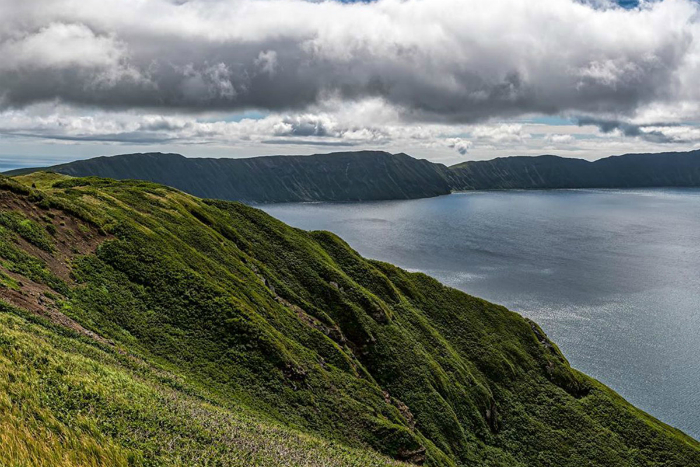
"Columns, joints or, as scientists call them — columnar jointing — appear both from the top and the bottom, meeting somewhere in the middle. If you look at them at a distance, it reminds the jaw of a giant that clenched his teeth.
This wonder of nature is not unique to the Kurils, as it can be found worldwide, but it looks very unusual and majestic.
The most famous columns are located in the Northern Ireland. Today I want to show you the columns on the Shumshu Island. This is the northernmost island of the Kuril Ridge. It is located just at 11 kilometers from Kamchatka.
I tried to find at least something about them on the Internet. Shumshu Island is primarily known for the fact that there was an operation of knocking out the Japanese from the Northern Kurils in August of 1945. There is a lot of information about it, but not a single photo of this cape with the columns. It is called Cape Sverdlovsk and it is one of the most underestimated sights of the Northern Kurils.
The joints stretch along the coast for several hundred meters, forming a grotto in the center. They look very artificial and human-made, though people had nothing to do with this.
Such columnar joints appear in places where lava flows from the volcano and reaches the ocean and cools down immediately. When it cools down, it shrinks in volume and splits into hexagons. It starts to crack from top downward, and then the cracks go deep, forming jaws of a giant.
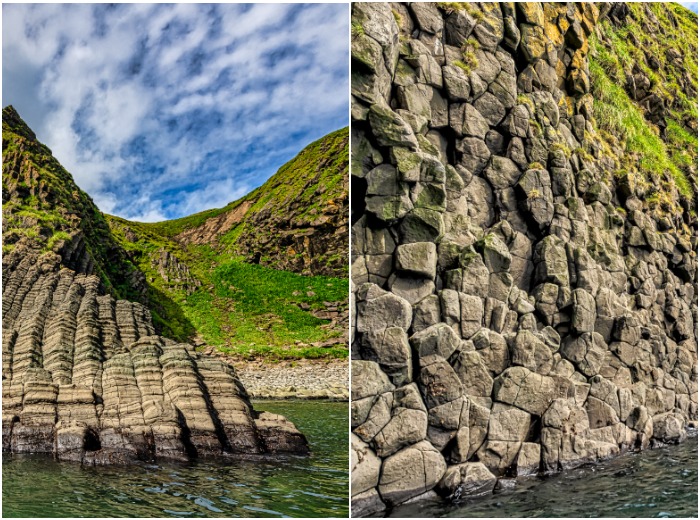
14. Shumshu Island — final post
Shumshu Island was our last stop on the way back. It is an island full of historical events and endowed with wonderful nature.
On the one side, we were so impressed by this place, on the other side — it was so sad to leave, as all of us knew that our adventure was coming to an end.
We spent 10 days in the Northern Kurils, but it seemed that we were there for a month. Every day was so full. Each island was unique and didn’t look like the others.
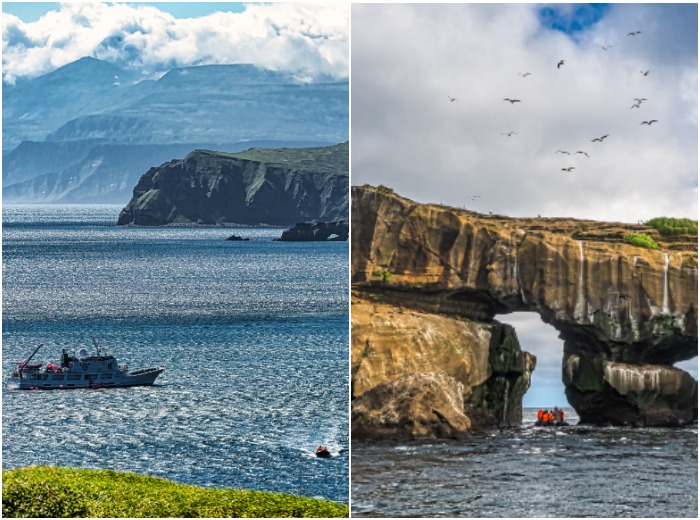
If you also want to visit the Northern and Middle Kuril Islands and see all these places with your own eyes, see the detailed description of the cruise; we plan to repeat it in 2021. If you have any questions, please call +7 (495) 241-36-74 or email to go@russiadiscovery.ru